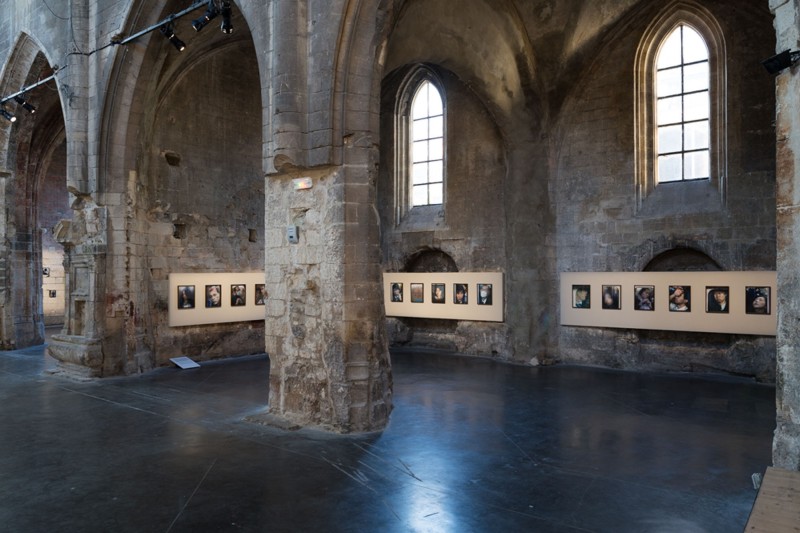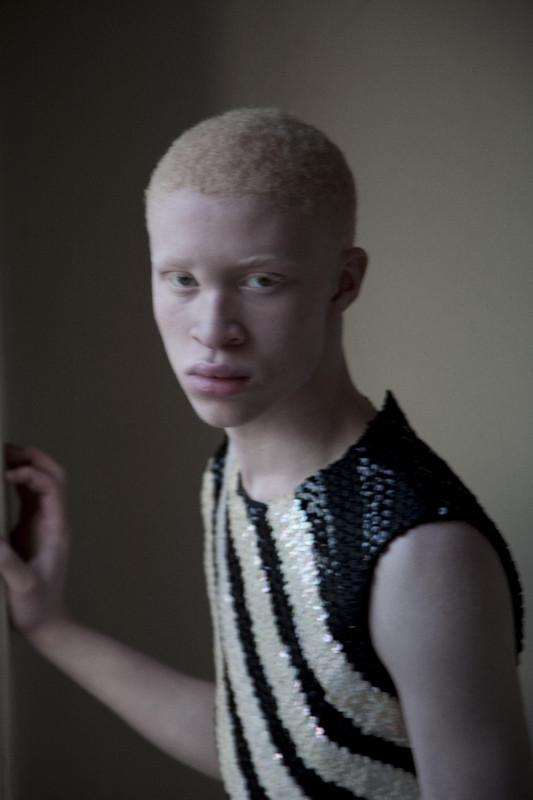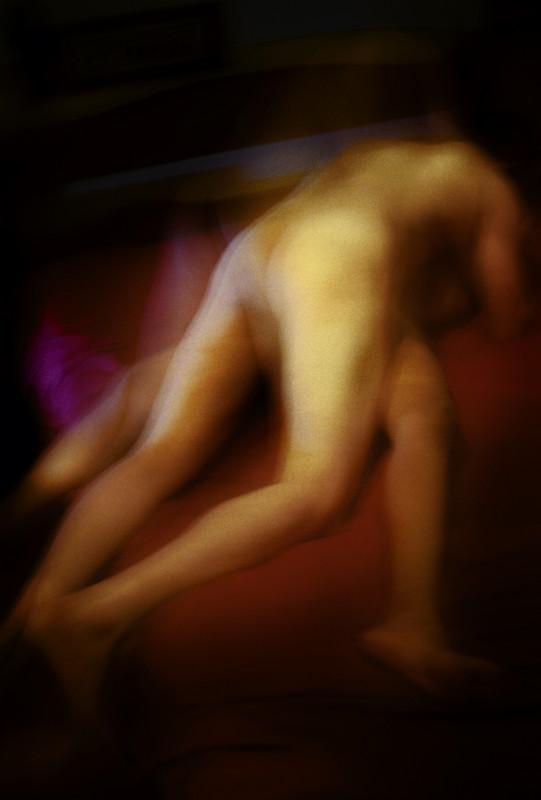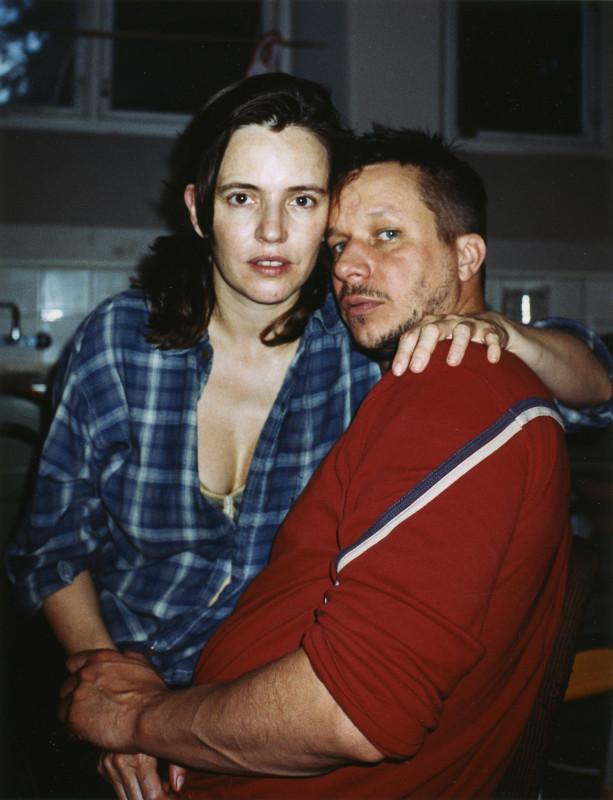Home → EXHIBITIONS 2009 → 40 ans de ruptures, NAN GOLDIN, COMMISSAIRE INVITÉE → LA COLLECTION DE PHOTOGRAPHIES DE NAN GOLDIN
Edition 2009
LA COLLECTION DE PHOTOGRAPHIES DE NAN GOLDIN
When François and I met the first time to discuss the possibility of my curating a photography show, I quickly reeled off the names of my favourite photographers. That’s when I realised that so many of them are dead. I thought it made more sense to leave the room for living photographers who are working now. That’s when I mentioned my collection and François became interested in having me exhibit at least part of it.
He seemed quite surprised at the scope of my collection. It has been an obsession for me, as have many of my other collections that I live with in Paris and New York. They have a high priority in my life. They cover a large range of different practices. It also covers parts of the 19th, 20th and 21st centuries, from Africa and Central Europe to Japan and the Americas.
I collect photography, as with my other collections, that is not historical, pedantic or catalogued. I collect the photographs that move me emotionally, that I identify with, or that expand my knowledge of the world. I collect where I find beauty; a forest or a face. I am attracted to images that have parallels to my own experiences, either literally or subconsciously; of lovers, bar life, lesbians, drag queens, opium smokers and death. I am highly discriminating about how these subjects, how the people in the portraits are represented. I relate to the photographers who show their own lives, from the inside or with intimate fascination and respect. For instance, Man Ray’s photograph of Barbette pulling up her stockings, or Christer Strömholm’s extensive diary of living with a group of queens in the 1970s on the Place Blanche. That is the only work of drag queens I’ve seen that is similar to mine. I heard that Christer never photographed people until he met the queens: before that he was too shy. This is also a direct parallel to my life.
My first body of work was of the drag queens I lived with in Boston. It was my household chore to steal the new issues of French and Italian Vogue every month. We consumed the magazines, tearing out pages to put on the walls. My earliest influence was fashion and glamour photos of the Hollywood superstars of the thirties through the fifties. I wanted to make glamour photos like Guy Bourdin and put the queens in Vogue. But I was not a ‘good photographer’ technically. Then I accidentally found a teacher who responded to my work. His first question was, ‘Do you know the work of Larry Clarke?’ He introduced me to art photography, of which I knew nothing. It was an enormous revelation and validation. I didn’t feel so alone in my own work. My heroes became the early Larry Clarke, August Sanders, Weegee, Arbus and Brassaï. I realised how other photography could influence my own. I have yet to set up a work directly from another’s image. It is a much wider influence of effecting the way I look at the world. Other people find it stange that I have no pictures of my own hanging in my home, just the work of others. I’d rather look at the work of others as obsessive as myself but this relationsip is in constant floux, while my own relationship with my work is with me all the time. It was a much wider influence of others who wanted to take profound portraits, whose work was motivated by their own lives and needs, who were as big collectors as myself.
I think of photography in itself is a form of collecting. Many are recording their lives, what they’ve witnessed, the people and the places where they’ve lived. They are trying to find their own version of life, their own definitions of the world. There is a common obsession with memory, often as a way to try to stave off loss, I am attracted to this darkness, the artists exploration of the void and their own mortality. I’ve noticed that photographers tend to live long lives, and wondered about the connection. Over my bed in both Paris and New York I hang these photographs. They are like protective totems. The arrangments on these wall serve like portraits of myself at any given time — the photographs alone and collectively tell stories. As I constantly rearrange my collection — adding works and switching others out, the cumilitive picture always changes. Similarly I like to watch the changes in an individual artist’s work. Like many of the artists in my collection, the changes, likeWeegee’s progression from crime scene to the more intimate portraits of his time to distortion, shed light on an artist’s life and their shifting focus.
I was surprised to realise that almost all the work I’ve collected is black and white. I’ve grown to love surrealistic photographers like Molinier’s last work, which are a manifestation of his erotic fantasies. Molinier’s and Bellmer’s work is infused with a struggle with self. Molinier was 70 before he began to photograph himself with a stocking covering his face, as a transvestite with many limbs or a doll. I realise I love black and white photography: with its shadows, bursts of light—most profound about life and bursts of light because it seems the
most pure and elemental form phtography can take. There is a term, scopophelia, which was described to me as a form of extreme physical pleasure derived from looking. I relish this gift.
Nan Goldin, March 2009.
He seemed quite surprised at the scope of my collection. It has been an obsession for me, as have many of my other collections that I live with in Paris and New York. They have a high priority in my life. They cover a large range of different practices. It also covers parts of the 19th, 20th and 21st centuries, from Africa and Central Europe to Japan and the Americas.
I collect photography, as with my other collections, that is not historical, pedantic or catalogued. I collect the photographs that move me emotionally, that I identify with, or that expand my knowledge of the world. I collect where I find beauty; a forest or a face. I am attracted to images that have parallels to my own experiences, either literally or subconsciously; of lovers, bar life, lesbians, drag queens, opium smokers and death. I am highly discriminating about how these subjects, how the people in the portraits are represented. I relate to the photographers who show their own lives, from the inside or with intimate fascination and respect. For instance, Man Ray’s photograph of Barbette pulling up her stockings, or Christer Strömholm’s extensive diary of living with a group of queens in the 1970s on the Place Blanche. That is the only work of drag queens I’ve seen that is similar to mine. I heard that Christer never photographed people until he met the queens: before that he was too shy. This is also a direct parallel to my life.
My first body of work was of the drag queens I lived with in Boston. It was my household chore to steal the new issues of French and Italian Vogue every month. We consumed the magazines, tearing out pages to put on the walls. My earliest influence was fashion and glamour photos of the Hollywood superstars of the thirties through the fifties. I wanted to make glamour photos like Guy Bourdin and put the queens in Vogue. But I was not a ‘good photographer’ technically. Then I accidentally found a teacher who responded to my work. His first question was, ‘Do you know the work of Larry Clarke?’ He introduced me to art photography, of which I knew nothing. It was an enormous revelation and validation. I didn’t feel so alone in my own work. My heroes became the early Larry Clarke, August Sanders, Weegee, Arbus and Brassaï. I realised how other photography could influence my own. I have yet to set up a work directly from another’s image. It is a much wider influence of effecting the way I look at the world. Other people find it stange that I have no pictures of my own hanging in my home, just the work of others. I’d rather look at the work of others as obsessive as myself but this relationsip is in constant floux, while my own relationship with my work is with me all the time. It was a much wider influence of others who wanted to take profound portraits, whose work was motivated by their own lives and needs, who were as big collectors as myself.
I think of photography in itself is a form of collecting. Many are recording their lives, what they’ve witnessed, the people and the places where they’ve lived. They are trying to find their own version of life, their own definitions of the world. There is a common obsession with memory, often as a way to try to stave off loss, I am attracted to this darkness, the artists exploration of the void and their own mortality. I’ve noticed that photographers tend to live long lives, and wondered about the connection. Over my bed in both Paris and New York I hang these photographs. They are like protective totems. The arrangments on these wall serve like portraits of myself at any given time — the photographs alone and collectively tell stories. As I constantly rearrange my collection — adding works and switching others out, the cumilitive picture always changes. Similarly I like to watch the changes in an individual artist’s work. Like many of the artists in my collection, the changes, likeWeegee’s progression from crime scene to the more intimate portraits of his time to distortion, shed light on an artist’s life and their shifting focus.
I was surprised to realise that almost all the work I’ve collected is black and white. I’ve grown to love surrealistic photographers like Molinier’s last work, which are a manifestation of his erotic fantasies. Molinier’s and Bellmer’s work is infused with a struggle with self. Molinier was 70 before he began to photograph himself with a stocking covering his face, as a transvestite with many limbs or a doll. I realise I love black and white photography: with its shadows, bursts of light—most profound about life and bursts of light because it seems the
most pure and elemental form phtography can take. There is a term, scopophelia, which was described to me as a form of extreme physical pleasure derived from looking. I relish this gift.
Nan Goldin, March 2009.
Exhibition presented at the Eglise des Frères Prêcheurs.









